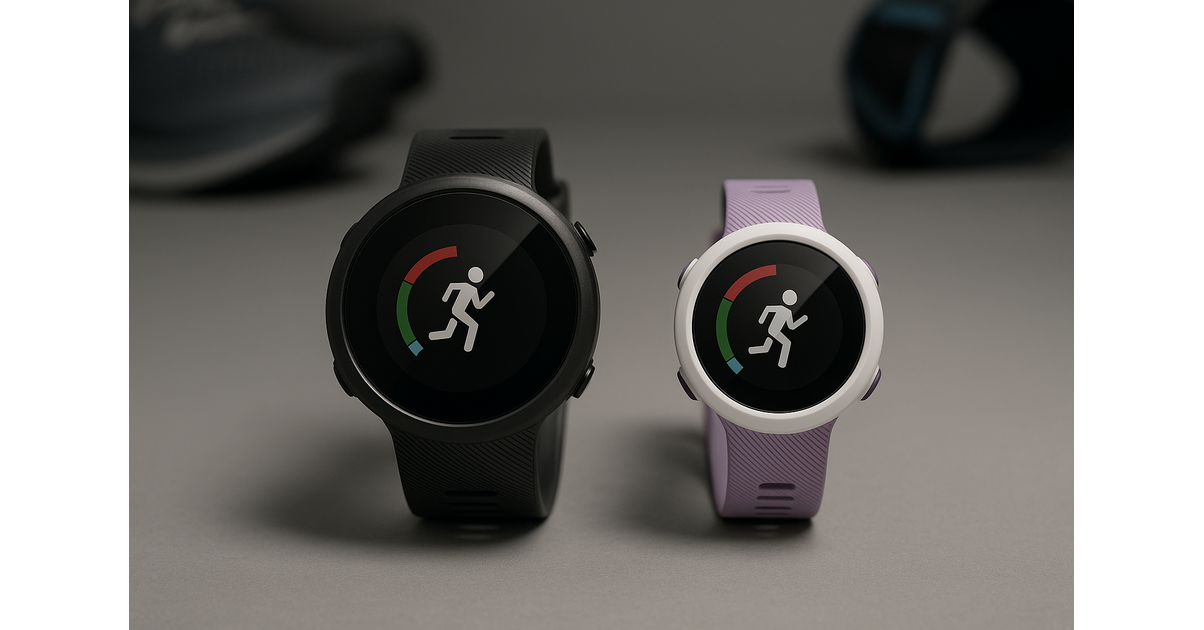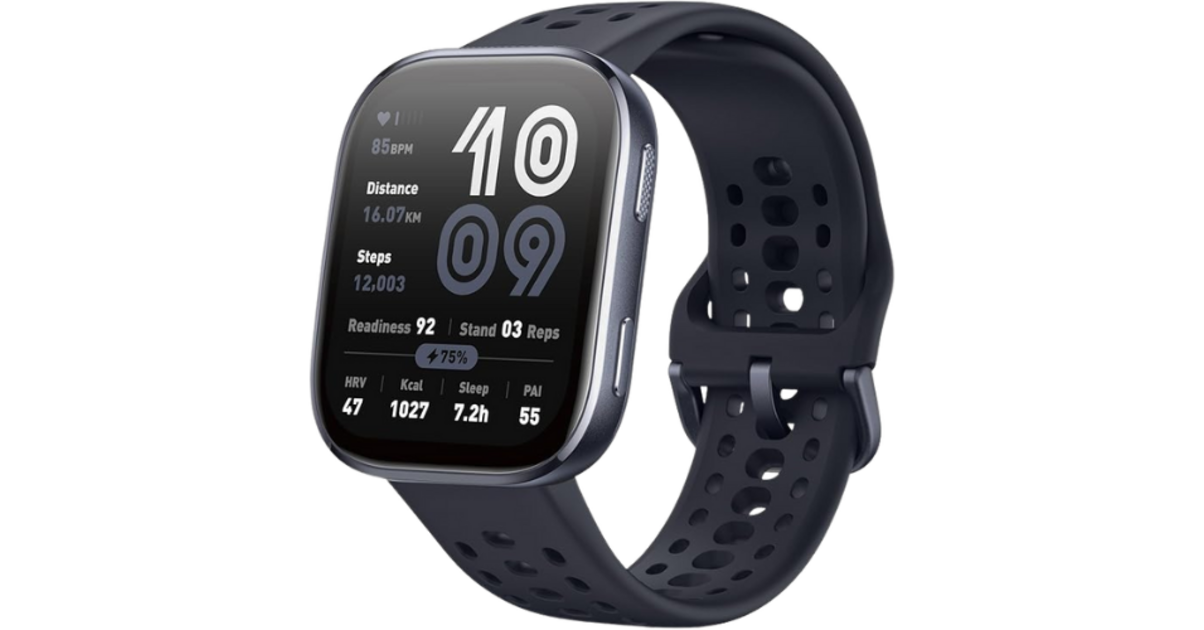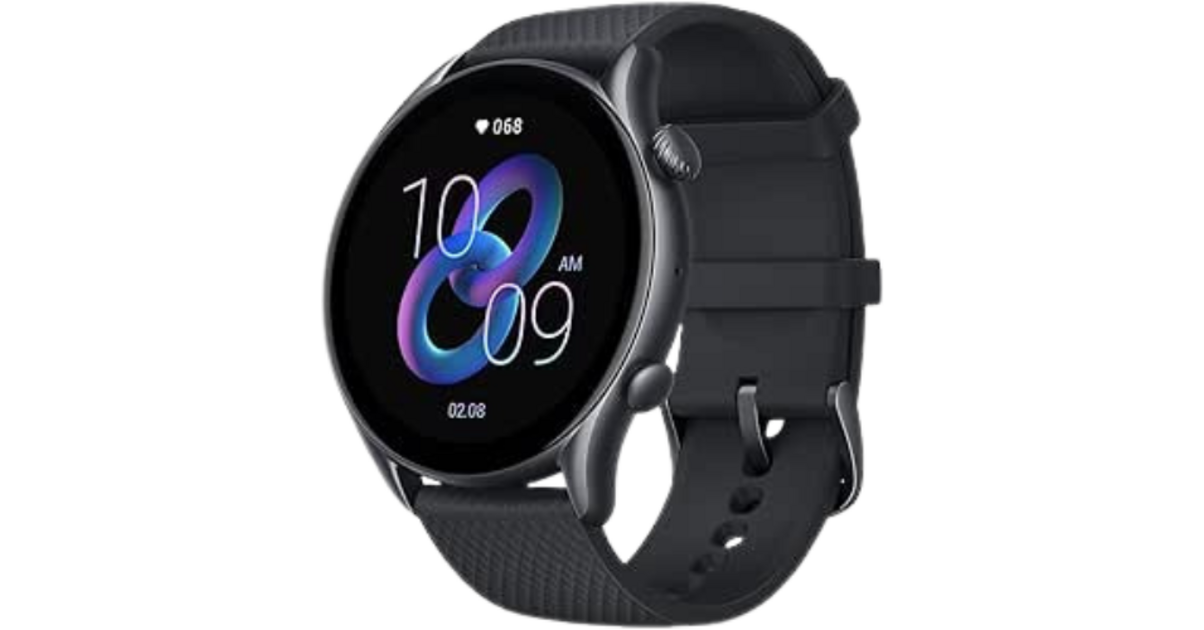Table of Contents
What doesn’t change: the sports engine
Full running profile (outdoor, treadmill, track via session), GPS/GLONASS/Galileo, pace/cardio alerts, estimated VO₂ max, basic recovery tracking, security with incident detection + Assistance (smartphone required), maps Garmin Coach. No baro altimeter, no on-board music, no “real” multisport. Identical, down to the smallest menu.
On our test outings (5 weeks, Auterive & Lèze trails, June–July 2025), we logged 12 identical 10 km runs at tempo pace: distance difference < 0.2% between 45 and 45S, median cardio at ±2 bpm once tightening was optimized. .FIT files match. RAS. If you want to upgrade functional and more training margins, also look at our expert guide Garmin Forerunner 265 versus 255 to situate the ecosystem.
Autonomy, daily
Standard weeks: 4 outings, 45–60 minutes each, active notifications, MIP “always readable” screen. Observed result: 6 to 7 days before recharging, 12–13 hours of continuous GPS if you push yourself (tested on a long trail, but without music, logical). Same again.
Analysis and data
You get the essentials: pace, cadence, stride length, VO₂ max, segments, Garmin Coach sessions. Both watches treat the same. If you’re asking for Training Readiness, Advanced Training Load or PacePro — no. You have to upgrade.
For whom? Concrete use cases
Beginner road race — 45S if your wrist is thin, 45 otherwise. You launch Garmin Coach 5K/10K, you receive the sessions and that’s it. Simple, reliable. Zero friction. All that remains is to run (and sleep).
Confirmed runner — tempo sessions, fartlek, 10K–semi. You stay on track with pace/cardio alerts. The MIP screen holds up the raking evening light, the battery lasts the week. If you go to the track often, the stability of the 45’s display may help you slightly at high speed. Nuance, not revolution.
Light trail/fast walking — OK for rolling paths. No baro altimeter, correct GPS track under light wooded cover. For serious D+, go upmarket (or assume a “smoothed” GPS elevation).
Booster bike — basic bike profile, it records cleanly. But we are talking about a racing watch above all.
If you’re eyeing triathlon, transitions, advanced metrics, go read our Forerunner 945 955 and 965 triathlon analysis to understand the tooling gap. Here, the 45 remains deliberately simple.
Methodology
- Author : David Deteve, publisher L’Swiss Made Watch.
- Context : field tests over 5 weeks (June–July 2025), 12 10K outings at controlled pace, 2 long outings (2 hours) on mixed trails, weather 12–28°C.
- Tools : double recording 45/45S right/left wrist in swap, .FIT export to Garmin Connect then cross analysis.
- Objective : isolate the impact of height/weight on comfort and cardio stability, with constant functionality.
- Boundaries : no swimming in the pool (profile absent), no music tests (function not supported), no ultra-distance. Total transparency — if a point was missing, we’ll say so. Here, the conclusion is clear: chosen by wrist size and wearing preference.
Shopping experience: simple, without traps
First reflex: measure your wrist with a flexible tape measure (or a shoelace + ruler). 13–15cm? 45S. 15.5-19.5cm? rather 45. Between two sizes, think about long-term comfort and keep a margin for summer (wrist which “swells” a little). Detail ? Yes. Useful, too.
Check the bracelet width if you buy second-hand: 18 mm (45S) or 20 mm (45). The Quick Releases can be changed in 10 seconds, but mixing sizes gets stuck. Look at the condition of the glass (scratches), the remaining autonomy (a GPS run of 1 hour should consume ~8–10% on a healthy battery). And avoid “too good” prices without history. That’s guaranteed to be a hassle.
Budget-wise, the two models travel together. The promos don’t distinguish much between sizes; choose the fit first, then the label. If you are hesitant with a generation above, index your use: need more GPS autonomy, finer pace aids, modern training metrics? So the price difference is justified, otherwise not.
Quick recap
- Key Difference : size and weight (42 mm vs 39 mm, 36 g vs 32 g), straps 20 mm vs 18 mm.
- Functions : identical from A to Z — race profiles, multi-constellation GPS, VO₂ max, Coach, safety.
- Autonomy : ~7 days watch / ~1 p.m. GPS for both.
- Comfort : 45S for thin wrists, 45 for medium/large wrists. Tightening = reliable cardio.
- Uses : running first. Auxiliary bike OK. Light trail possible, without baro.
- Purchase : chosen by fit, not by promotion. Check strap width and battery status.






